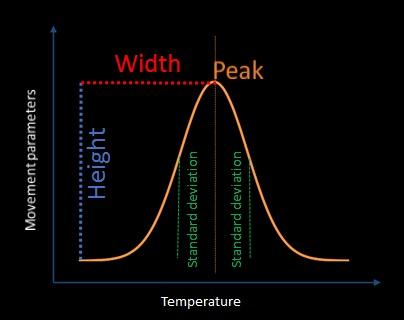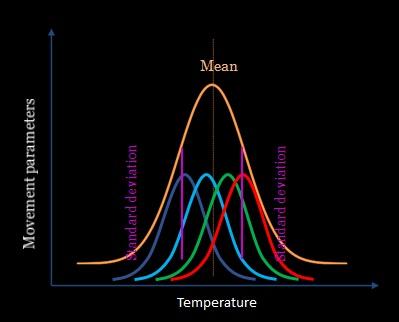The individual model parameters
The model for the individual data was described by the following function:
f=h*exp((-0.5(x-m)^2)/w)
where h, m and w were parameters of the normally distributed data. They describe its height (h), peak (m) and width (w).

Because all movement parameters are inherently positive, we used the log-transformed model:
g=l+((-0.5(x-m)^2)/exp(d))
Movement parameters data for each individual was log scaled and assumed to be normally distributed around g.
Likelihood function (likelihood) is a probability (density) which determines the occurrence of observed data, conditional on the parameters of the described model (Hartig 2011). It is used to describe model parameters after data is available. Given that our model (described above) takes in l, m and d parameters as an input, we had to return the probability of obtaining the data under this model. The difference between prediction (the individual model) and the observed data was calculated and probability densities were looked up for those deviations to occur. Movement parameter (ecc, nsv, mnlv, area) of specific individual during the specific temperature (y(i,t) has normal distribution with mean (g(i,t)) for each individual during the specific temperature, and with standard deviation (σi) for each individual:
y(i,t)~N(g(i,t),σi))
Population level parameters
Population level parameters (hyperparameters) estimated were mean (M) and standard deviation (S) of each individual parameter (l,m,d, and z). Each hyperparameter has its own normal distribution.

Responsible for this page:
Director of undergraduate studies Biology
Last updated:
05/30/17
